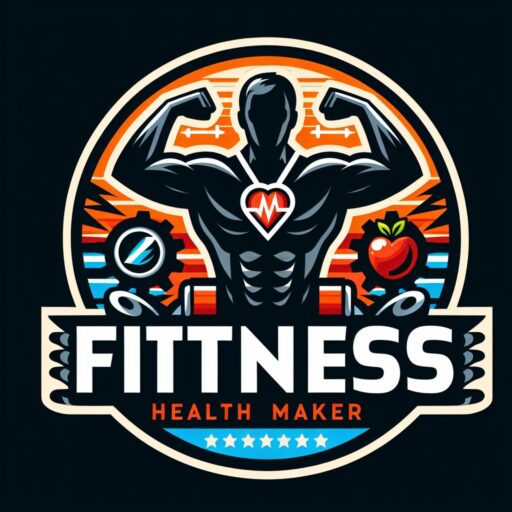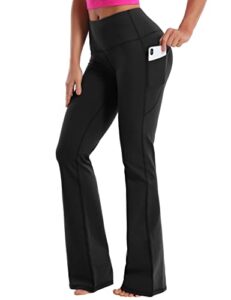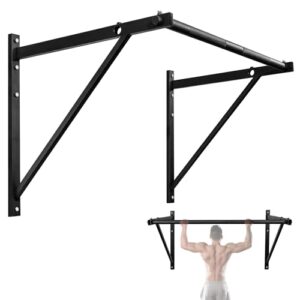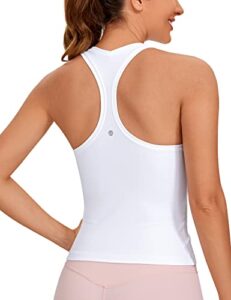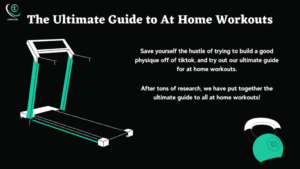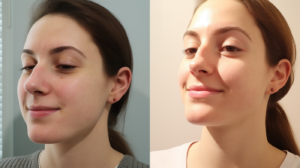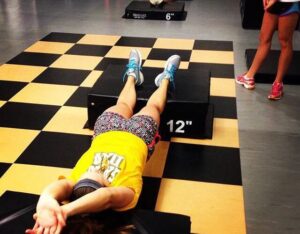Flexibility refers to the ability of a muscle to stretch, while mobility is the ability of a joint to move through a range of motion. Understanding the difference between flexibility and mobility is crucial for anyone looking to improve their physical performance, recover from injury, or maintain overall well-being.
Flexibility focuses on the length of the muscles which allows for greater movement around a joint. Mobility, on the other hand, encompasses not only muscle flexibility but also the movement of joints, ligaments, and tendons. It’s about how well and freely a body part can move.
Targeting both flexibility and mobility in a fitness routine can lead to improved posture, fewer aches and pains, and a higher quality of daily living. Active stretching techniques, yoga, and dynamic warm-ups tend to increase flexibility; whereas, joint exercises and mobility drills are designed to enhance joint function and stability.

Credit: www.moverx.ca
Flexibility Vs. Mobility: What Sets Them Apart?
Flexibility and mobility often get mixed up. Each one plays a unique role in bodily movement. Understanding their differences helps improve your health.
Defining Flexibility
Flexibility is about muscles. It means how far your muscles can stretch. Think of a rubber band. The farther a rubber band stretches, the more flexible it is.
Bodies need flexible muscles. Flexible muscles let you do things like touching your toes. They prevent injuries too. Here’s what flexibility does:
- Improves posture
- Reduces muscle tension
- Lowers injury risk
Defining Mobility
Mobility is about joints. It means how well your joints move in their full range. Think of a door hinge. A door that swings open freely is like a joint with good mobility.
Good mobility allows for smooth, controlled movements. It’s key for physical activities. Here are the benefits:
- Maintains joint health
- Enhances movement efficiency
- Boosts physical performance
Flexibility helps your muscles stretch. Mobility helps your joints move well. This knowledge guides effective training and injury prevention.

Credit: www.nutrisense.io
The Role Of Flexibility In Movement And Health
Flexibility plays a crucial role in our daily movements and overall health. It allows our joints to move through a full range of motion. This range is vital for performing everyday activities with ease. Being flexible supports muscular balance and alignment, leading to better posture. It also reduces the risk of injuries by enabling the muscles to work more effectively.
Benefits Of Being Flexible
- Improved Posture: Flexible muscles support the spine, promoting a strong, straight back.
- Less Pain: Flexibility helps decrease muscle soreness and reduce tightness.
- Better Performance: It allows for greater movement in sports and exercise.
- Easier Daily Activities: Tasks like bending and reaching become easier.
Drawbacks Of Overlooking Flexibility
- Limited Movement: A lack of flexibility can lead to decreased joint mobility.
- Potential Injuries: Stiff muscles are more prone to strains and sprains.
- Posture Problems: Poor flexibility often results in bad posture.
- Chronic Pain: Tight muscles can contribute to back and neck pain.
Unlocking Mobility: More Than Just Flexibility
Many believe that flexibility and mobility are the same. This is not true. Flexibility is the ability of your muscles to stretch. Mobility, on the other hand, is about movement. It involves muscles, joints, and the nervous system too. Understanding this difference can change how you approach your physical health. Let us dive into what makes up mobility and why it matters in everyday life.
Components Of Mobility
To truly grasp mobility, consider its components. Joint range of motion (ROM) is crucial. It’s about how far your joints can move. Think of it as the foundation of mobility. Without good joint ROM, mobility suffers.
Muscle flexibility matters too. It contributes to joint ROM. But mobility also needs muscle strength, endurance, and neuromuscular control. This is your body’s ability to move with coordination and balance.
Imagine these components as a team. They work together to achieve smooth, efficient movement.
- Joint Range of Motion
- Muscle Flexibility
- Muscle Strength
- Endurance
- Neuromuscular Control
The Impact Of Mobility On Daily Activities
Mobility affects every move you make. From tying shoelaces to reaching high shelves, good mobility is key. Poor mobility can limit these activities. It can even lead to discomfort and injury.
| Activity | Good Mobility | Poor Mobility |
|---|---|---|
| Tying Shoes | Easy, no pain | Hard, maybe painful |
| Reaching for Objects | Effortless | Struggle, might drop things |
| Climbing Stairs | Smooth, no discomfort | Slower, could hurt knees or back |
Improving mobility can lead to better health and more freedom in daily activities. Practice regular stretching and strengthening exercises to enhance mobility. Always aim for a full range of motion in your movements.
Assessing Your Own Flexibility And Mobility Levels
Assessing Your Own Flexibility and Mobility Levels is pivotal for anyone active in sports or fitness. This assessment identifies improvement areas. Flexibility refers to the range of motion in a joint or series of joints. Mobility is the ability to move freely and easily. Knowing where you stand helps tailor workout routines for better performance and injury prevention.
Common Flexibility Tests
Flexibility tests provide insight into muscle length and elasticity. Starting with these tests shows how flexible you are.
- Sit-and-Reach Test: Measures hamstring and lower back flexibility.
- Shoulder Flexibility Test: Indicates shoulder and chest elasticity.
- Trunk Lift Test: Assesses the flexibility of the lower back muscles.
Basic Mobility Assessments
Mobility assessments focus on joint function and movement quality. They highlight potential restrictions.
- Overhead Squat Assessment: Reveals mobility in the hips, knees, and ankles.
- Lunge Test: Displays hip, ankle, and thoracic spine mobility.
- Push-up Test: Checks for proper shoulder function.
Track your progress with regular assessments. Note changes and work on weaknesses for overall improvements.
Improving Your Flexibility And Mobility
Are you ready to make every move with ease and grace? Understanding the difference between flexibility and mobility is key. They work hand in hand to improve how you move. Taking the right steps to enhance each can lead to better performance, fewer injuries, and a greater range of motion. Let’s dive into how to make those improvements a reality.
Stretching Techniques For Flexibility
Flexibility is the ability of your muscles to stretch. To increase flexibility, you need to stretch regularly. Here are some methods:
- Dynamic Stretching: These involve moving as you stretch. They are great before a workout to warm up.
- Static Stretching: Hold a stretch for 20-30 seconds. Best after exercise.
- PNF Stretching: Proprioceptive Neuromuscular Facilitation is a more advanced technique involving a stretch-contract-relax cycle.
Exercises For Enhancing Mobility
Mobility refers to how freely your joints move. Improved mobility means better motion range and less pain. Try these exercises:
- Hip Circles: Rotate your hips in a circular motion to loosen the joint.
- Arm Swings: Swing your arms back and forth to open the shoulder joints.
- Leg Swings: Stand on one leg and swing the other to increase hip mobility.
- Ankle Mobility Drills: Roll your ankles in different directions to prevent stiffness.
Combine these exercises with your stretching routine for optimal results. Be sure to focus on form and take your time. Gradual progression is vital for long-term success in improving flexibility and mobility.

Credit: www.shmv.com.au
Flexibility And Mobility Throughout Life Stages
Understanding the journey of flexibility and mobility helps you ensure a more active, vibrant lifestyle. Imagine your body as a vehicle that needs regular maintenance to keep it running smoothly over time.
Age-related Changes
Your body evolves as you grow older. Joints, muscles, and tendons lose some of their elasticity. This can lead to stiffness and reduced range of motion. It’s natural but not unavoidable.
Here are some of the changes you might expect:
- Children and teenagers often have excellent flexibility due to active lifestyles and growing bodies.
- Adults may start to feel tightness in muscles and joints as they become less active.
- Seniors might notice more significant stiffness and mobility restrictions due to age-related wear and tear.
Maintaining Flexibility And Mobility With Age
Let’s look at ways to stay supple and mobile regardless of your stage in life. Simple actions can make a huge difference in maintaining your range of motion and flexibility.
| Age Group | Action | Benefit |
|---|---|---|
| Children and Teens | Active play, sports, gymnastics | Develops a strong flexibility foundation |
| Adults | Regular stretching, yoga, pilates | Combats tightness, maintains motion |
| Seniors | Low-impact exercise, daily movement routines | Keeps joints and muscles functional |
Remember, consistency is key. By integrating flexibility and mobility exercises into your daily routine, you can embrace life’s stages with strength and grace.
Frequently Asked Questions On Difference Between Flexibility And Mobility
What Defines Muscle Flexibility?
Flexibility involves the ability of a joint to move through an unrestricted, pain-free range of motion. It’s dependent on muscle length.
Can Mobility Affect Athletic Performance?
Absolutely, enhanced mobility can lead to improved athletic performance due to greater range of motion and muscle activation.
Why Is Mobility Training Important?
Mobility training is essential as it helps maintain joint health, reduces injury risk, and improves overall movement quality.
How Often Should I Practice Stretching?
Consistent daily stretching can significantly improve flexibility over time, but individual needs may vary based on goals and lifestyle.
Is Flexibility Innate Or Trainable?
While genetics can influence baseline flexibility, it is largely trainable with regular stretching and mobility exercises.
Does Age Impact Flexibility And Mobility?
Yes, age can impact both flexibility and mobility, but regular exercise can help mitigate these effects and maintain range of motion.
Conclusion
Understanding the nuances between flexibility and mobility empowers us to tailor our workouts effectively. Each plays a vital role in our overall well-being, with specific benefits to our movement and health. Incorporate targeted exercises to improve both, and watch as your athletic performance and daily functions enhance.
Embrace the journey towards a balanced, dynamic body – where flexibility and mobility harmoniously coexist.
